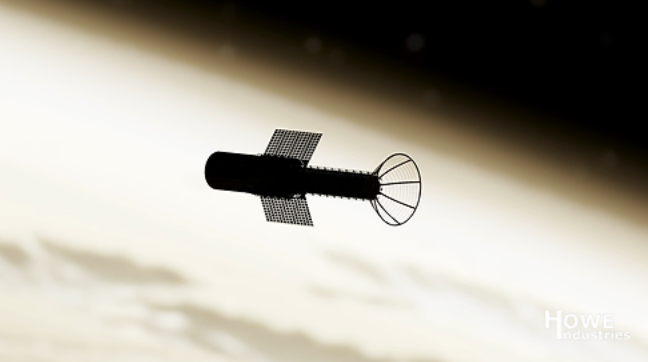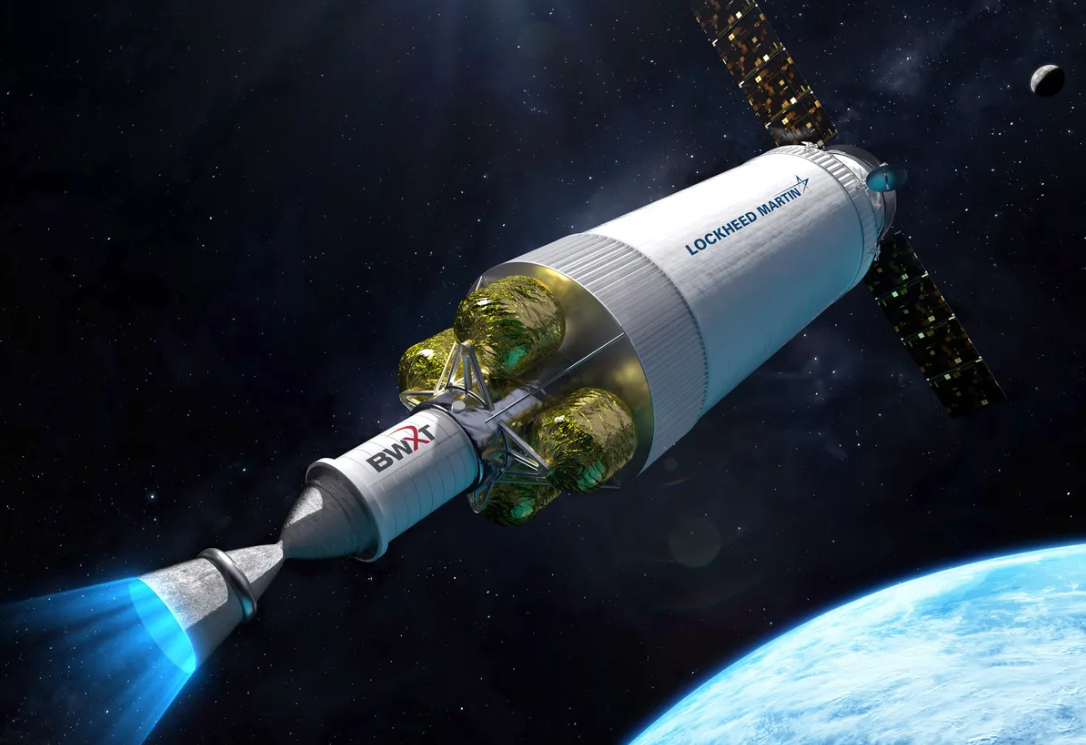Current rocket science
Energy waste of chemical explosions for rocket launches

There’s a similarity with space flight, train, plane, and automobile technologies. They simply expand the envelops of the status-quo. It’s like redesigning a mousetrap to do the same task. Nothing new.
With that said, here’s the latest for space flight:
From a 2024 article at popularmechanics.com: https://www.popularmechanics.com/space/rockets/a60608517/overcome-earth-gravity/
In 2001, British Electrical Engineer Roger Shawyer first introduced the “impossible drive,” known as the EmDrive. It was called “impossible” because its creator purported that the drive was reactionless, meaning no propellant required—in other words, it defied the known laws of physics (specifically, the conservation of momentum).
As with anything that appears to thumb its nose at Newton and Einstein, scientists raised more than a few eyebrows, and two decades of testing eventually boiled down to an inevitable (and somewhat predictable) conclusion in 2021: the EmDrive was bunk. But that’s the nature of the scientific method—take a seemingly impossible idea, put it through rigorous testing, and hopefully get to an unassailable conclusion (or new discoveries that lead in other directions). But the not-based-in-physics dream of a propellant-less machine didn’t die with the EmDrive. Now, a new challenger approaches, and this one has a former NASA scientist backing it up.
He says his team—made up of people from NASA, Blue Origin, and the Air Force—investigated propellant-less drives for decades before arriving at electrostatics. For years, their devices produced negligible thrust, but saw increases with each new iteration. This culminated in 2023, when this “New Force”-powered drive generated enough thrust to overcome Earth’s gravity.
“Essentially, what we’ve discovered is that systems that contain an asymmetry in either electrostatic pressure or some kind of electrostatic divergent field can give a system of a center of mass a non-zero force component,” Buhler told The Debrief. “So, what that basically means is that there’s some underlying physics that can essentially place force on an object should those two constraints be met.”
Once EmDrive was told it couldn’t work, its creator and supporters had to work even harder to prove that it does. Their Exodus Propulsion Technologies website explains:
Like chemical rockets, Exodus propulsion devices create momentum for a spacecraft's motion. However, Exodus' platform uses the interaction of electrostatic fields to harness the momentum found in electricity rather than in a chemical reaction.
The process of generating the Exodus Effect(TM) is repeatable, predictable, published and well-understood. After being released from a 2-year national security hold, the first patent describing the Exodus Effect(TM) has finally been issued by the USPTO. Both acceleration and thrust (Newtons) are quantifiable and supported by 3rd-party validations. These facts are what separate Exodus from the pack.

EM Drive engine, space.com
CATTCC is a participant in the advanced transportation industry. It’s valid to hold an opinion. A “propellant-less” propellant is grammatically odd. A muscle-less muscle would otherwise be referred to as a spring. And a spring is different than a muscle. Any rocket engine that propels a force through a nozzle is considered a rocket engine. Using an electric reaction as a propellant, produces a heat reaction from molecular collisions. With very high precision to direct the reaction of that collision, a controlled reaction of that collision could be attained. And, this type of action is far more advantageous than a reaction from a chemical explosion; the standard source of fuel for most modern transportation.
It’s important to make the clarification that CATTCC supports exploration of alternative space flight technologies. This blogpost acknowledges there are other means of thrust propulsion. There have been numerous successful space flight missions using gravitational attraction.
Another of the rocket technology pursuits is an Arizona company is working to develop the Pulse Plasma Rocket. – Howe Industries is an advance rocket development company.

Most propulsion systems developed over the past 50 years are either high thrust OR high Isp- not both. A system with 100,000 N thrust and 5000 s Isp requires a power source greater than 2.5 gigawatts. If EP, then roughly 10 gigawatts of thermal heat would have to be radiated- well beyond any system put forth so far. Pulsed power generation allows high Isp and high thrust. As the system is not in thermodynamic equilibrium, the heat rejection can be accomplished.
The Pulsed Fission Fusion (PUFF) NIAC Phase II headed by Dr. Rob Adams at MSFC is complete. •Uses 50-100 MA of current through a liquid lithium liner to z-pinch a SNM capsule to criticality to ignite fusion •Potential of 30,000 s Isp and 100s of KN of thrust •Complex and difficult to test- partly due to classification guidelines; PPR uses a barrel consisting of water moderated HALEU: 1) Keff~.98 if bullet drives criticality or 2) Keff>1 if resonant drum drives criticality Specially designed “bullet” is injected at a velocity commensurate with the reactor period of the barrel 1e12 neutrons are injected along the path via a fast pulsed laser System is designed to preferentially heat the bullet to temperatures of several hundred eV. Resulting plasmoid is ejected and expands into magnetic nozzle ala PUFF.
Another space flight technology is the government’s pursuit. This is nuclear thermal rocket technology. This effort is by DARPA and NASA with a project test flight by 2026.
Instead, you could use nuclear power—not a mere radioactive heat source, the kind that might power the weak ion propulsion of a long-term space probe, but an actual fission reactor. Such a furnace could expand a trickle of 20-kelvin liquid hydrogen into a tornado of 2,700-kelvin gas, enabling a manageable amount of propellent to provide powerful thrust halfway to Mars, then to reverse the thrust to decelerate.
That is precisely what NASA and DARPA want to build, first as a prototype, then as a moon rocket, and finally as an interplanetary vehicle. On 26 July, the agencies disclosed details of the project, a partnership with Lockheed Martin and BWX Technologies, a reactor company based in Lynchburg, Va. They give the project the Harry Potterish name of DRACO, for Demonstration Rocket for Agile Cislunar Operations.
The plan is to test the prototype in space beginning in late 2026. That’s a very short order, eased in part by combining what would normally be the second and third phases of development. The speedup is possible because the prototype “incorporates a lot of heritage hardware from past deep-space missions,” says Tabitha Dodson, the DRACO program manager at DARPA. “We wanted to have a highly reliable space platform, with everything that’s not the engine low risk.”
DARPA is the government’s most innovative agency for scientific advances. With this said, keeping the status-quo is the goal of bureaucracy.

https://www.darpa.mil/program/demonstration-rocket-for-agile-cislunar-operations
The goal of the Demonstration Rocket for Agile Cislunar Operations (DRACO) program is to demonstrate a nuclear thermal rocket (NTR) in orbit. NTRs use a nuclear reactor to heat propellant to extreme temperatures before exhausting the hot propellant through a nozzle to produce thrust. Compared to conventional space propulsion technologies, NTRs offers a high thrust-to-weight ratio around 10,000 times greater than electric propulsion and two-to-five times greater specific impulse (i.e. propellant efficiency) than in-space chemical propulsion.
For a better explanation: https://en.wikipedia.org/wiki/Demonstration_Rocket_for_Agile_Cislunar_Operations
The Demonstration Rocket for Agile Cislunar Operations (DRACO) is an under-development launch vehicle by Lockheed Martin in partnership with BWX Technologies as part of a DARPA program to be demonstrated in space in 2027.[2][3] The experimental vehicle is planned to be reusable and will utilize next-generation nuclear thermal propulsion technology and low-enriched uranium,[2][3][4] with the U.S. Space Force to provide the launch.[5] In 2023, NASA joined the DARPA program in developing the nuclear thermal rocket (NTR) to carry astronaut crews to deep-space destinations like Mars.[6] DRACO will be the world's first in-orbit demonstration of a NTR engine.[7] It will reportedly be launched aboard a Vulcan Centaur as a payload.[8]
Tabitha Dodson, DARPA program manager for DRACO says, "Unlike today's chemical systems, which have reached a limit in how far they can evolve, nuclear technologies are theorized to evolve to systems such as fusion and beyond. Spacecraft evolved to be maneuvered and powered by nuclear reactors will enable humanity to go farther, with a higher chance of survival and success for any mission type."[9]
According to Lockheed Martin, there are considerable efficiency and time gains from the nuclear thermal propulsion.[10] NASA believes the much higher efficiency will be two to three times more than chemical propulsion,[5] and the nuclear thermal rocket is to cut the journey time to Mars in half.[11]
To explore greater advances, new directions have to be taken. It’s CATTCC’s mission to discover and develop gravity-based transportation advances. The rational for this type of technological advance for space flight has been made clear by many space flights. The most recent voyage of the Parker Solar Probe in reaching a speed of 400,000 miles per hour is certainly evidence to the advantage of using gravity as a source for acceleration.



